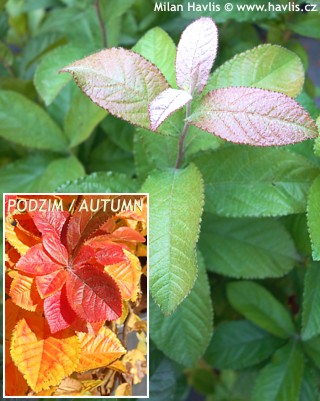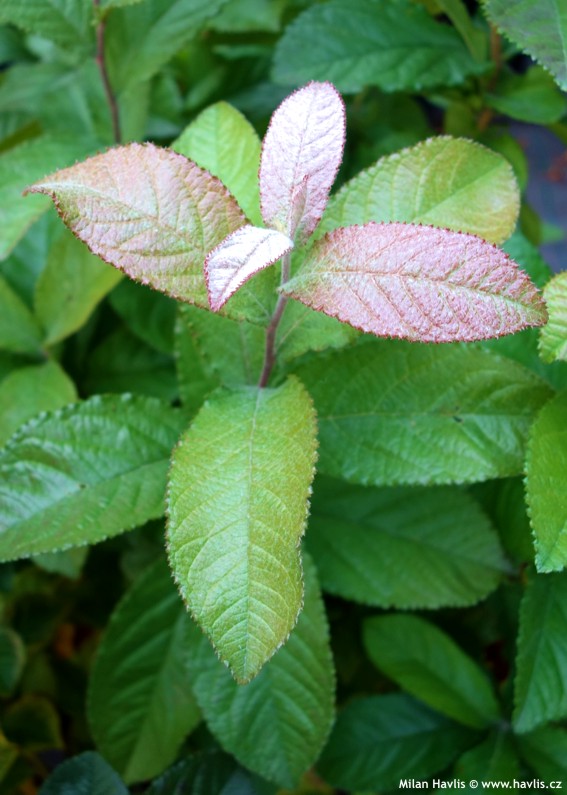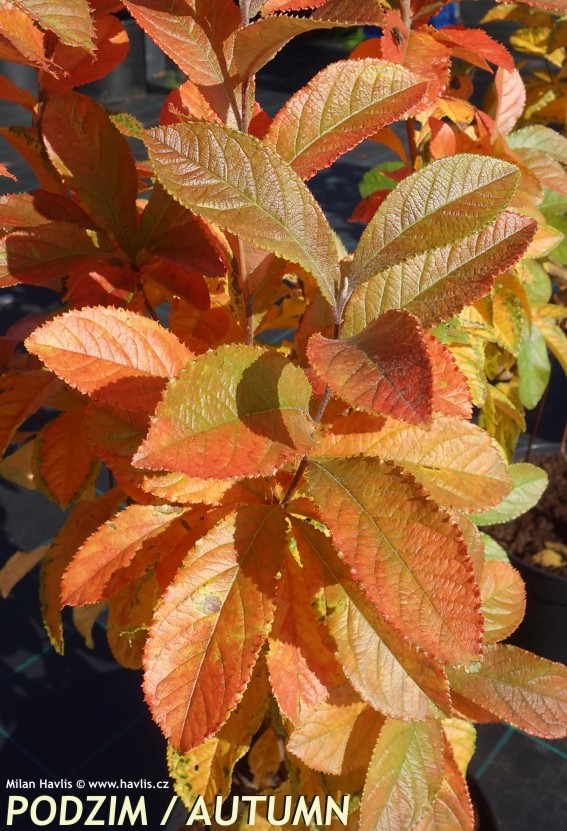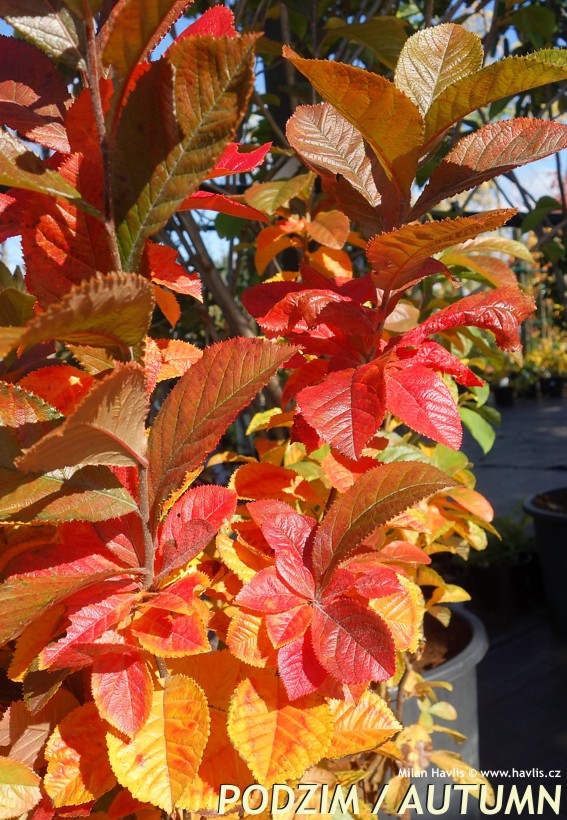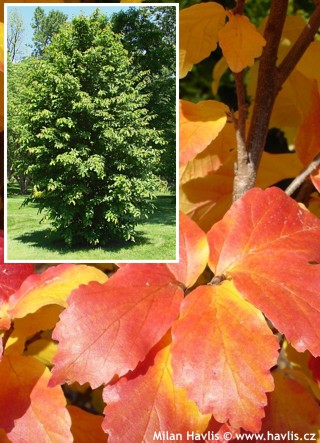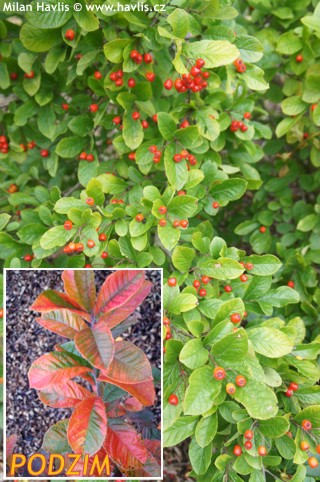Photinia villosa var. maximowicziana oriental photinia
size/type
taller shrub,taller shrub
usual height
2-4m
usual width
2-3,5m
leaves
deciduous broadleaf
colour of leaves
location
full to partial sun
winter protection
for zone 5+6

for zone 7

categorized
Photinia
Oriental photinia is a heavily underutilized hardy shrub that is still very rare both in gardens as well as European garden centres. This deciduous shrub is native to Korea, China, and Japan. Although the evergreen sisters of this photinia are more commercially successful we would like to introduce to you a species that deserves more attention. Want to know why? Keep reading …Description of the plant:
Oriental photinia is a rather slow but very dense growing, mid-sized shrub suitable for gardens of almost any size. It has deep green, broadly elliptic to obovate, deciduous leaves. In late spring appear masses of pure white, small flowers which are followed by profusion of ovoid, shiny red fruit in autumn. That is also a season of the most striking beauty of this unique shrub. The leaves turn fabulous shades of honey-yellow, pinkish red, and purple and burgundy colours. Maximowicziana is a selection from West Japan and has slightly larger and notably thicker leaves which emerge with burgundy red hues and silvery overlay, similarly to evergreen elaeagnus. Also, they reliably colour in autumn. It was introduced in 1897.
This plant makes a well rounded shrub with dense foliage that makes it almost non-transparent. You can use it as small specimen shrub or a small tree, or placed in a mixed border combined with plants of other shapes and colours. I planted my one in the middle of a Japanese style garden where it perfectly complements a large fir in the background and low growing rhododendrons and azaleas on both sides.
It likes moist but well-drained, preferably acidic soil for best autumn colouring. It forms a nice shape even without pruning, however, if you want to model your plant you can do so in early spring before the buds begin to swell. Mulching is not needed for winter but will provide constant moisture throughout the year. This plant is very hardy and so easy to grow. Hardy to about -34°C.
Last update 28-10-2017
QUICK PRICE OVERVIEW
CURRENTLY SOLD OUT












